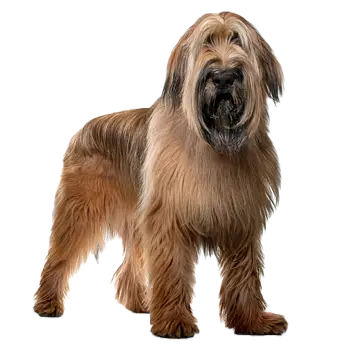Training a Brie Shepherd requires understanding the breed's high intelligence, sensitivity, and working heritage while employing methods emphasizing positive reinforcement, consistency, and patience rather than force or intimidation. These smart dogs learn quickly and retain lessons exceptionally well when training remains engaging and purposeful, but their independent thinking can manifest as stubborn resistance to commands they perceive as arbitrary, inconsistent, or lacking clear purpose. Success lies in earning the dog's respect through fair, confident leadership rather than demanding blind compliance through force or dominance.
Early socialization represents the most critical aspect of puppy development, determining whether the dog matures into a confident, well-adjusted adult capable of handling various situations appropriately or develops fearfulness and defensive aggression toward unfamiliar people, animals, and situations. Puppies should experience diverse people of varying ages, appearances, and behaviors; different animals including dogs, cats, and livestock; various environments from quiet neighborhoods to busy urban areas; and unusual sights and sounds like traffic, construction equipment, and crowds. This exposure should occur primarily between 8 and 16 weeks of age when puppies most readily accept new experiences without developing fear responses.
Basic obedience training begins immediately upon bringing a puppy home, establishing communication patterns and reinforcing appropriate behaviors while the dog is most receptive to learning. Teaching fundamental commands including sit, down, stay, come, heel, and leave it creates the foundation for more advanced training while establishing your role as teacher and leader. Keep training sessions short, approximately 10 to 15 minutes, maintaining high energy and enthusiasm that engages the dog's attention and makes learning enjoyable rather than tedious or stressful.
Positive reinforcement through treats, praise, play, and other rewards motivates Brie Shepherds effectively and builds strong training relationships based on trust and cooperation. These sensitive dogs respond poorly to harsh corrections, physical punishment, or heavy-handed dominance techniques that damage trust and can trigger defensive aggression or fearful avoidance behaviors. When mistakes occur, redirect to correct behavior and reward success rather than dwelling on failures or punishing errors that are normal parts of learning.
Consistency proves essential in training, as these intelligent dogs quickly identify inconsistencies and exploit them when rules seem arbitrarily enforced. All family members must enforce the same rules and expectations, using consistent commands and hand signals to avoid confusion. Allowing behaviors sometimes while prohibiting them other times confuses the dog and undermines training progress significantly. Establish clear boundaries and maintain them consistently throughout the dog's life to ensure reliable behavior patterns.
The breed's sensitive nature means dogs detect and respond to handler emotions, adjusting their behavior according to your mood and energy levels during training sessions. Maintaining calm, confident demeanor during training produces better results than frustrated or angry responses to training challenges or setbacks. These dogs essentially read minds through subtle body language and tone cues, understanding unstated expectations and emotional states.
Advanced training opportunities include herding trials where Brie Shepherds can demonstrate their natural abilities controlling livestock through instinct and training. Many dogs excel at these activities even without farm backgrounds, as the herding drive remains strong in the breed despite generations primarily serving as companions. Other suitable activities include obedience competition, agility courses, rally obedience, tracking tests, and therapy dog work where their gentle nature benefits people in hospitals, nursing homes, or schools.
Exercise requirements for Brie Shepherds are substantial, reflecting their heritage as working dogs capable of spending entire days herding livestock across varied terrain in all weather conditions. Adult dogs need minimum 60 to 90 minutes of vigorous daily exercise divided into multiple sessions providing both physical exertion and mental stimulation. Long walks provide basic activity but don't satisfy their need for more intense physical output and mental engagement. Running, hiking, swimming, fetch games, and interactive play better meet their substantial exercise requirements.
Mental stimulation equals physical exercise in importance for these highly intelligent dogs possessing working heritage. Providing puzzle toys, teaching new commands, practicing nose work, or assigning household tasks like carrying items engages their working heritage and prevents boredom-related behavioral problems. A mentally and physically tired Brie Shepherd makes a calm, contented companion, while an under-stimulated dog develops destructive behaviors, excessive barking, or nuisance habits reflecting unmet needs.
Puppies require modified exercise approaches that avoid stressing developing joints and bones during critical growth periods. Short play sessions and brief walks suit growing dogs better than intense running or jumping that can damage growth plates and predispose to orthopedic problems. Gradually increase exercise duration and intensity as puppies mature, reaching full exercise capacity around 18 months to two years of age when skeletal development completes.
Successful training produces well-mannered, reliable companions who retain their natural instincts and working abilities while understanding expectations for modern life alongside human families. These trained dogs become versatile partners capable of competing in dog sports, performing working roles, and serving as devoted family companions who enhance lives through their intelligence, loyalty, and genuine desire for partnership with their people.

